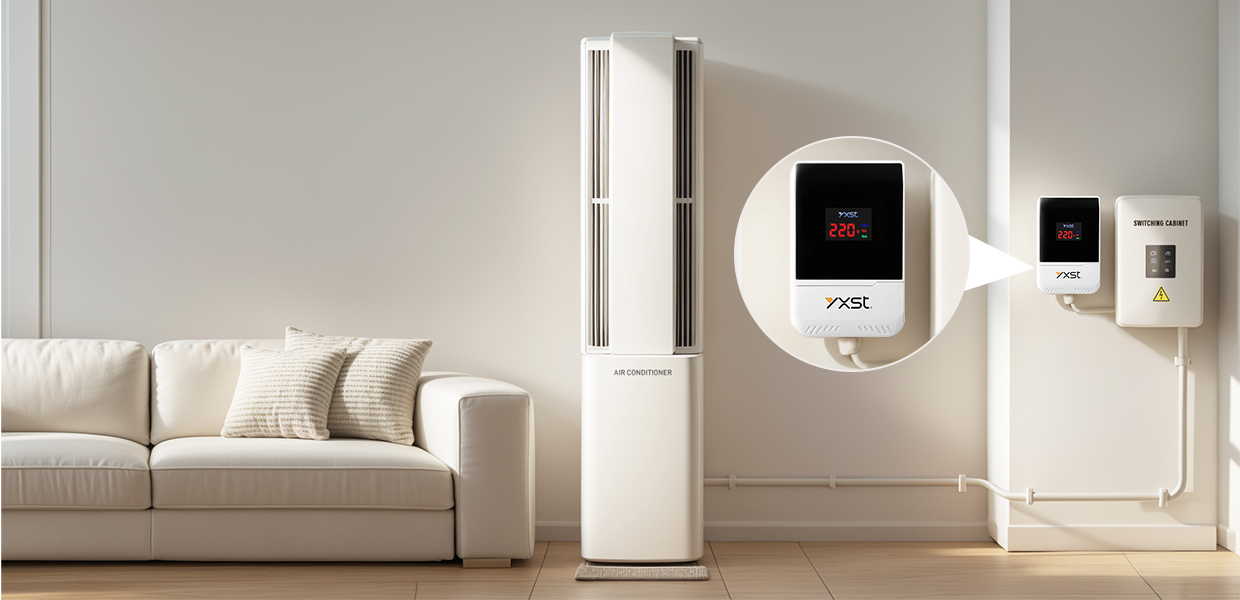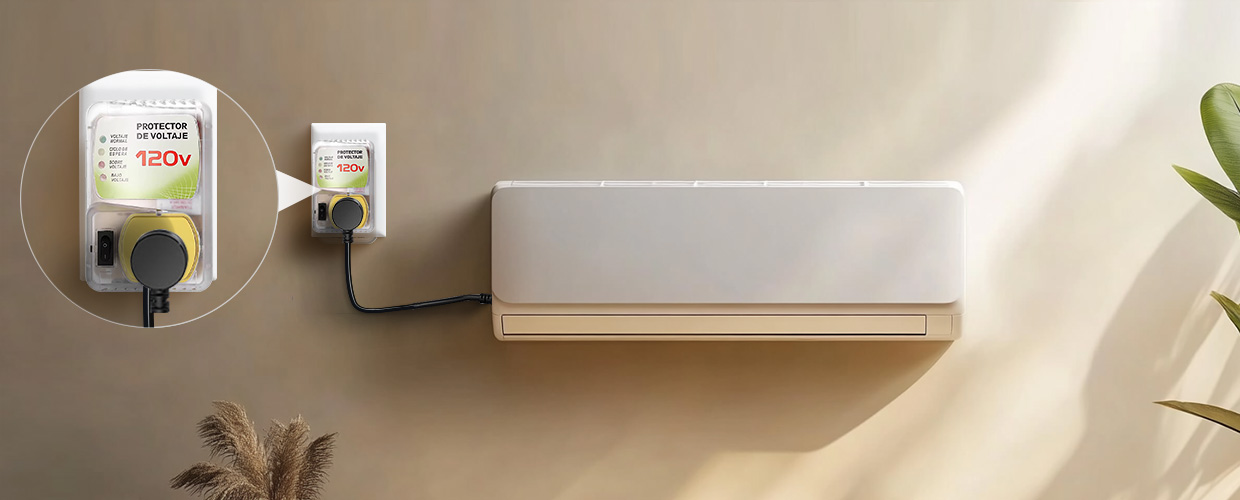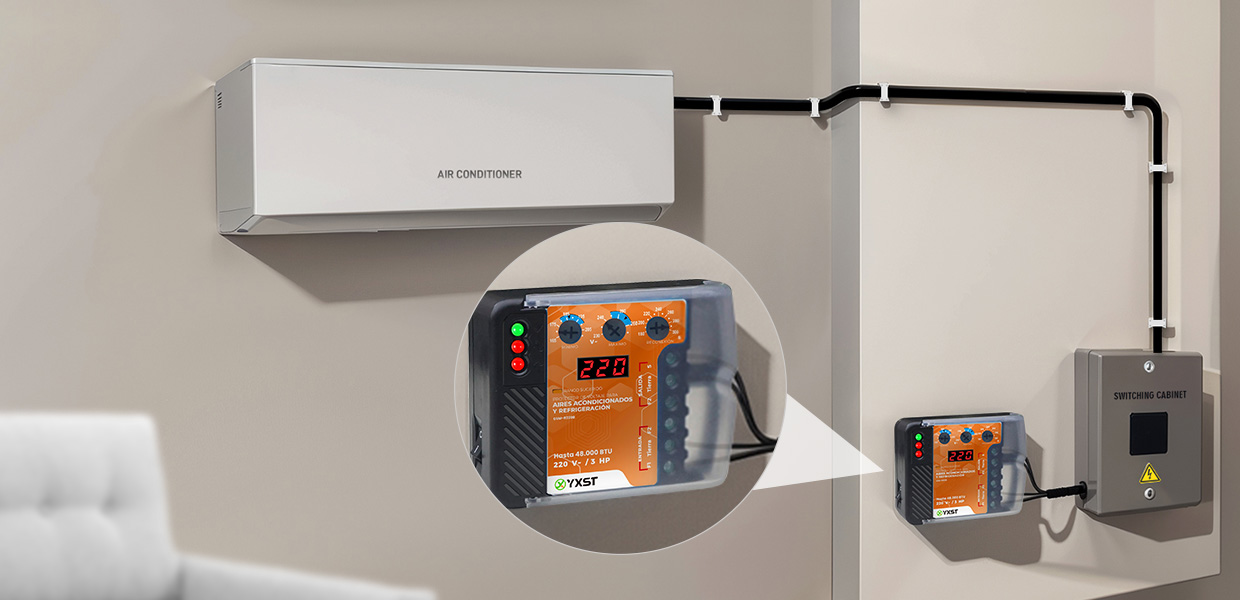The difference between 20A and 30A air conditioner voltage protectors
Date:2025-01-14 Click:742
The main difference between 20A and 30A air conditioner voltage protectors (usually automatic over-voltage protection or under voltage protection) is the maximum current they can carry. Specifically:
Maximum carrying current:
30A voltage protector (usually choose the close 32A specification): The maximum carrying current is 32 amperes, which is suitable for circuits or electrical equipment with higher current demand, such as some 3-horsepower or 5-horsepower air conditioners, especially when using 4.0mm² wires.
Scope of application and matching with electrical appliances:
20A voltage protector: Due to its small carrying current, it is usually used for small or medium-sized air conditioners, or other household appliances with low current demand.

30A/32A voltage protector: Due to its large carrying current, it is more suitable for large air conditioners (such as 5-horsepower air conditioners) or other high-power household appliances, such as high-power water heaters, etc.
Safety and protection:
Choosing the appropriate voltage protector specification is crucial to the circuit's safety. If the current in the circuit exceeds the carrying capacity of the protector without tripping, it may cause damage to electrical equipment or even cause safety accidents such as fire.
In summary, the main difference between 20A and 30A (or close to 32A) air conditioner voltage protectors is their maximum carrying current and applicable range. When choosing, the appropriate specifications should be selected according to the actual power and current requirements of the air conditioner to ensure the safety and stability of the circuit.
What are the differences between wall-mounted air conditioner protectors and vertical air conditioner protectors?
Adapted air conditioner types:
Wall-mounted air conditioner protectors: Designed for wall-mounted air conditioners, these air conditioners are usually small in size and installed on the wall, do not occupy floor space, and are suitable for small rooms such as bedrooms and study rooms.
Vertical air conditioner protector: It is suitable for vertical air conditioners. These air conditioners are larger in size and are usually placed on the ground or on a counter. They are suitable for spacious spaces such as living rooms and offices.Installation method:
Wall-mounted air conditioner protector: Since wall-mounted air conditioners are installed on the wall, their protectors also need to be installed in the circuit box on the wall accordingly, or integrated as part of the air conditioner power cord.
Vertical air conditioner protector: Vertical air conditioners are placed on the ground, and their protectors are usually installed in a circuit box on a nearby wall or on the ground to connect to the air conditioner power cord.
Current specification:
Although the main function of the protector is to provide overcurrent and short-circuit protection, air conditioners of different specifications may require protectors of different current specifications.
Wall-mounted air conditioners usually have lower power, so they may be equipped with protectors of smaller current specifications (such as 20A).
Vertical air conditioners may require protectors of larger current specifications (such as 32A) due to their higher power to ensure adequate protection when the air conditioner is running.
In summary, there are differences between wall-mounted air conditioner protectors and vertical air conditioner protectors in terms of compatible air conditioner types, installation methods, and possible current specifications. When choosing, you should choose a suitable protector based on the specific air conditioner type, power and installation environment.



